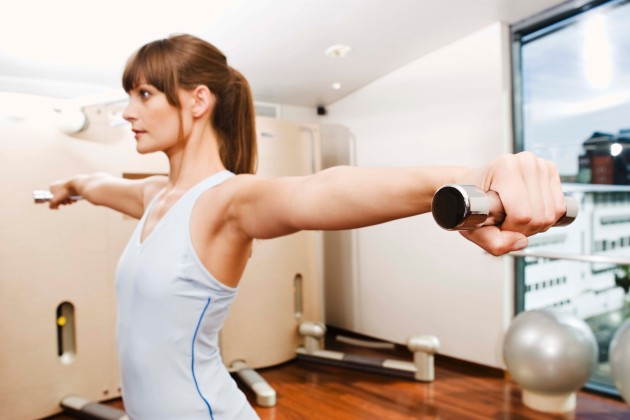
Exercising
For patients with a broken arm (from the shoulder to fingers)
Range-of -motion
If you’re recovering from a broken elbow, do simple range-of-motion exercises such as curling and uncurling the fingers, and gently swinging the arms. These exercises help to prevent stiffening, improve blood circulation and reduce swelling.
If you’ve fractured your shoulder, passive or assisted exercises, such as lowering and raising your arm, help. Do 30 repetitions split into three sets, and repeat two to three times a day. Do this only in the “callous” formation stage, which is an advanced part of the healing process.
Strengthening
Stretch rubber bands with varying resistance to build up strength.
Balancing
Press a large gym ball against the wall. Using your hands, gently move the ball in different directions.
Back-to-function (mainly for people who play sports, such as basketball and netball)
Practise throwing and catching a ball with a friend. This is normally done during the final stage of rehabilitation.
For patients with a broken leg (from hips to the foot)
If you’ve broken a leg, you need to first learn how to move around with walking aids like crutches, walking frames or sticks. This allows the fracture to heal by ensuring that the recovering leg doesn’t bear the full weight of the body
straight away. Physiotherapists will teach you the right posture, the proper use of a walking aid, and how to manoeuvre up and downstairs (if required).
Range-of -motion
Kneeflexion (improves the knee’s range of motion)
Sit on a bed with your back straight. Use both hands to hold a towel over your foot. With the towel supporting your foot, pull your injured knee towards your chest and bend this knee as far as it can go. Hold this position for about 10 to 20 seconds. Repeat this exercise 20 to 30 times in a slow, controlled motion.
Knee straightening
Sit on a bed and straighten your knees. Place your hands above and below your injured knee. Exert pressure on your injured knee with your hands by gently pushing downwards. Hold this position for 10 to 20 seconds. Repeat this exercise 20 to 30 times in a slow, controlled motion.
Strengthening
Leg press machines help to strengthen the quadriceps muscle in the thigh. Use both legs to do the leg press exercises before switching to only the injured leg. Gradually increase the resistance once the leg starts
regaining strength.
Balancing
Stand on a balance foam or disk to train your balance. This exercise can only be started after doctors allow you to put your full weight on the injured leg.
Back-to-function (mainly for athletes)
The final stages of physiotherapy will involve the treadmill. Start with brisk walking and jogging, before progressing to running exercises on the treadmill. Typically, one to two months on the treadmill is required before you regain your ability and build up your tolerance to hit the running track again.
Read more Physiothrephy news here.
Check out our Interviews section, every Tuesday a new story. Tomorrow read about Stanislaw Gosciniak – I developed my program in AZS Czestochowa.